No matter how well-regarded a particular airport happens to be, the slog from curb to cabin is pretty much the same wherever you go.
A decades-old paradigm of queues, security screens, snack vendors, and gate-waiting prevails—the only difference is the level of stress. Transiting a modern hub such as Munich or Seoul is more easily endured than threading your way through the perpetual construction zones that pass for airports around New York.
The sky portal of the 2040s, however, is likely to be free of such delights. Many of us will be driven to the terminal by autonomous cars; our eyes, faces, and fingers will be scanned; and our bags will have a permanent ID that allows them to be whisked from our homes before we even set out.
Some of these airports will no longer be relegated to the outskirts of town – they will merge with city centers, becoming new destination “cities” within a city for people without travel plans. Shall we get dinner, watch a movie, see a concert, shop? People will choose to go to the airport. Your employer may even relocate there.
These are the types of infrastructure investments and technologies that will, in theory, allow airports to largely eradicate the dreaded waiting.
Travelers will migrate around the terminal faster and see fewer walls and physical barriers thanks to the abundance of sophisticated sensors, predicts Dallas-based architecture and design firm Corgan.
The company recently assembled its concepts of how airports will evolve, based on extensive research of passenger experiences at various airports and the greater role technology may play.
One day, the airport will know “everything about everyone moving in the airport,” said Seth Young, director of the Center for Aviation Studies at Ohio State University.
The goal will be to deploy “a security infrastructure that’s constantly screening people from the door to the gate, and not having this toll-booth mentality,” he said. “We know that 99.9 percent of the passengers are clean, so why are we wasting time screening all of those?”
Much of this technology is likely to be seen outside the U.S. first, given the advanced age of most American airports and the more robust infrastructure funding available in Asia, the Middle East, and Europe. In the 2017 Skytrax awards, only 14 airports in the U.S. even made the top 100.
One can look to Singapore for a glimpse of how airports will change over the next 20 years. Changi Airport, a pioneer of the industry, recently opened a “living lab” to pursue further innovation. In March, it was named the world’s best airport for the fifth consecutive year by Skytrax.
Read more: Singapore's Changi 'Jewel' puts a rainforest inside an airport
“We need to evolve terminals into little cities"
One reason airports tend to look and function remarkably alike is that they’re designed to accommodate air travel infrastructure – security, passenger ticketing, baggage, ground transport – with the primary concerns being safety and minimal overhead for their tenant airlines.
“Today it’s what you call a transient space – it’s not a space to be in, it’s a space for you to move through,” said Jonathan Massey, the aviation leader for Corgan, which has overseen the design of major terminals worldwide, including Atlanta, Dallas, Shanghai, Dalian, China, and Los Angeles. “We need to evolve the terminals into being little cities.”
As part of the research, Corgan designers measured anxiety levels for different passenger types. The greatest offender among all groups was the security checkpoint, that confined space of shoe-doffing, laptop-extraction, and frisky government agents barking orders.
“A lot of the stress in an airport is perceived, it’s spatial,” said Samantha Flores, a Corgan associate. But when it comes to the biggest infrastructure burden, one aspect of today’s airports stands out.
Of biometrics and bags
“The big, big issue,” said Dwight Pullen, is luggage. Pullen, national director of aviation at Skanska USA, a construction firm with numerous airport projects, including the renovation of New York’s infamous LaGuardia, said: “Think about how much infrastructure and technology and time is spent on bags. It’s a huge issue. It’s not one that has been figured out.”
Changi Airport’s new Terminal 4, which will open later this year, will feature an array of “fast and seamless travel” (FAST) technologies to speed people-processing without the need for human supervision, from face-recognition software to automated bag-tagging and checking.
Two U.S. carriers, Delta Air Lines and JetBlue Airways, recently began trials of biometrics data as a way to speed your way. JetBlue is testing facial recognition equipment in Boston to match travelers with their passports and visa photos, while Delta just began trials of a similar system for bag drops at its Minneapolis-St. Paul hub.
Delta is also trying out fingerprints as a potential future replacement for boarding passes and ID and, via its mobile app, now offers customers real-time maps showing their checked bags’ location.
“We’re rapidly moving toward a day when your fingerprint, iris, or face will become the only ID you’ll need for any number of transactions throughout a given day,” said Gil West, Delta’s chief operating officer.
Amid all this increased efficiency, airports are also keen to have people linger so they'll buy more stuff – and that means a continuous focus on more upscale retail options.
“The number of passengers that flow through airports really rivals any other mechanism out there that can congregate that many customers in one place,” says Ken Buchanan, executive vice president of revenue management for Dallas-Fort Worth International, the fourth-largest U.S. airport by passenger numbers.
“It’s like having a Super Bowl worth of people every single day.”
But while technology helps make the airport experience more pleasant, the size of that captive audience may begin shrinking due to, well, technology.
One thing that may thin out the terminal crowds is cars. Ohio State’s Young and others see a day when autonomous vehicles – and air taxis of the sort Uber envisions – will siphon off a chunk of shorter flights that are 500 miles or less.
For U.S. airports, the ascension of self-driving cars will create a costly conundrum: how to replace parking revenue, which typically represents a quarter of annual airport budgets.
To find new revenue, airport executives will need to attract dollars in other ways, via dining, shopping, and entertainment. Since that may not be enough, new business models will be needed for ground transportation and commercial office space; perhaps new revenue may accrue from baggage delivery service.
Amenities in an airport – movies, bowling, butterfly gardens, and virtual reality golf – are becoming de rigueur for many Asian and Middle Eastern hubs. Singapore’s Jewel Changi extension at Terminal 1, set to open in early 2019, will offer a five-story garden with thousands of trees and plants, along with a 40-meter (131-foot) “Rain Vortex” lighted water display.
Similar themes are apparent in the designs for Helsinki Airport’s Terminal 2 expansion, set for 2021, which includes an indoor forest.
At Changi, concession revenues rose 5 percent last year to a record S$2.16 billion (US$1.6 billion), while the world’s busiest airport, Atlanta’s Hartsfield-Jackson International, topped US$1 billion in concession sales in 2016, also a record.
“Our efforts to grow Changi’s commercial business and provide an enjoyable shopping and dining experience is part and parcel of enhancing the overall airport experience for our passengers, and will continue in the years to come,” the airport said in an emailed statement.
“No matter what,” Young said, “airports want to make it efficient.” That means getting through quickly – be it arriving, departing, or transferring. “But they love it when people are at the airport,” he added, “because of the opportunities to spend money.”
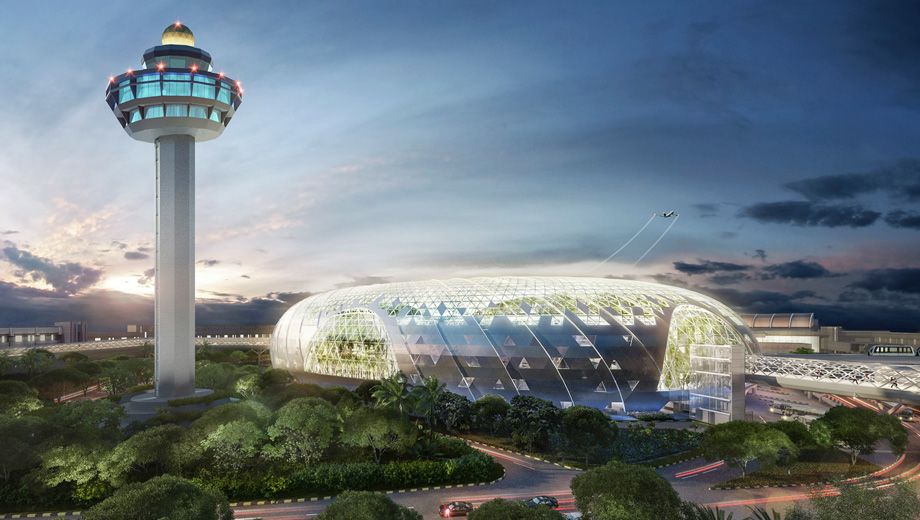
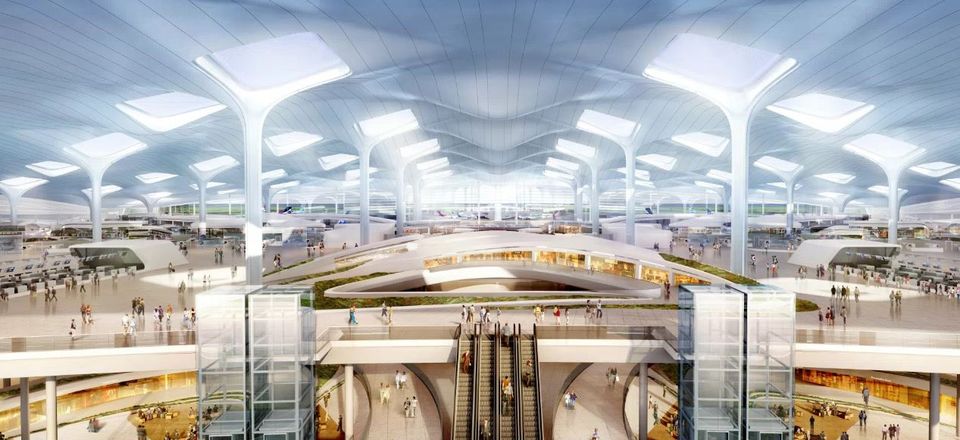
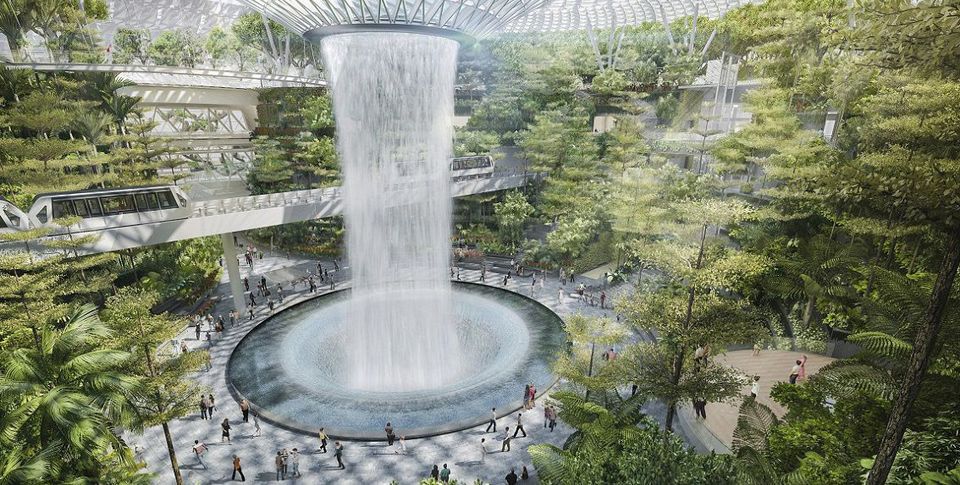

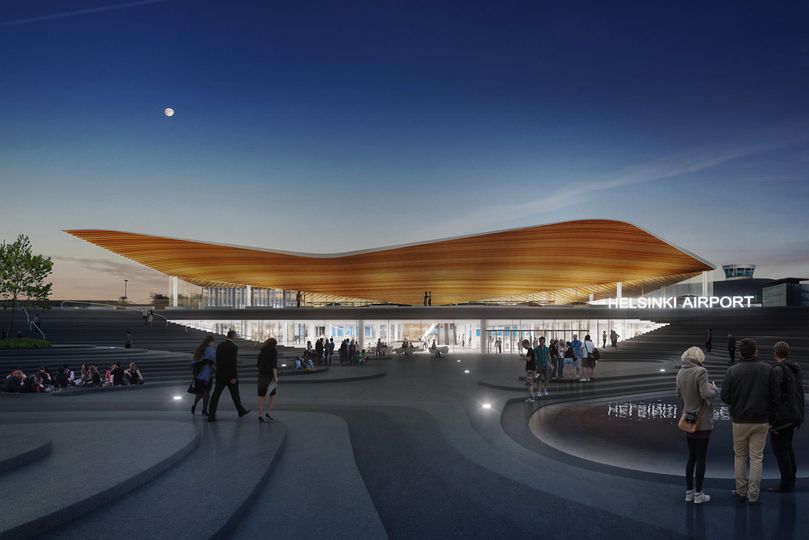
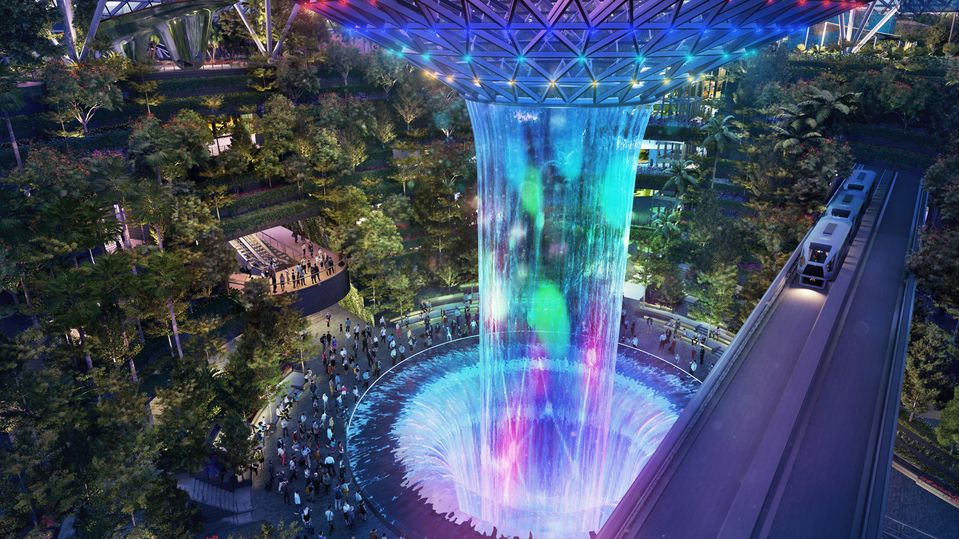
Hi Guest, join in the discussion on The airports of the future are actually here already